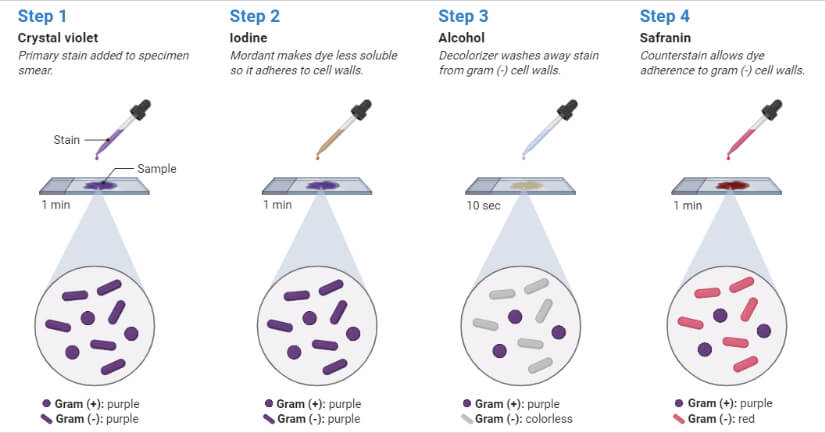The Gram Staining Procedure Is Best Described as
So the day before you intend to use the yeast transfer a small number of cells from the stock culture to fresh medium usually YED. A bacterial colony is made up of thousands to billions of cells that are created from a single cell.

Gram Staining Principle Reagents Procedure Steps Results
The gram stain is a sequential staining technique invented for differentiating bacterial species.

. The main purpose of this procedure is to detect the tetanus bacillus Clostridium tetani which can occur in these products. A bacterial sample can be heat. You can use a flamed loop to transfer the cells but a sterile toothpick is.
Microbiology Questions and Answers. Scientists use specific characteristics to describe the resulting colony. The staining technique distinguishes between two main types of bacteria gram positive and gram negative by imparting color on the cells.
As described below and illustrated in Table 1 and Figure 2 with emphasis on Gram-positive bacteria many of the bacterial genera that have been described in the BV-associated vaginal environment have also been observed in both the female and male urinary tracts using culture-independent approaches. For a review look at the directions for the simple stain. With both hands obtain the light microscope from the cabinet corresponding to.
015 gram Yeast Nitrogen Base without amino acids and ammonium sulfate 052 gram ammonium sulfate. While not all bacteria have a cell wall and thus cannot be stained with this method it is still a very useful and commonly performed stain. Gloves are available for the staining procedure.
Get help with your Microbiology homework. This is because they stain negative using the Gram stain. The Gram stain is a differential technique that is commonly used for the purposes of classifying bacteria.
Coli is described as a Gram-negative bacterium. Access the answers to hundreds of Microbiology questions that are explained in. Its best to have fresh cultures for your experiments.
Carefully rinse off the dye with tap water and blot the slide dry with paper towel or blotting paper. Placing the slide on the staining rack in the sink cover the slide with crystal violet for one minute. GRAM STAIN The most commonly used differential stain is the Gram stain first described in 1884 by Christian Gram a Danish.
Differential staining is a procedure that takes advantage of differences in the physical and chemical properties of different groups of bacteria. Its major utility lies in determining the causative organism of bacterial infection by staining the cell wall. It allows us to differentiate between different kinds of bacterial cells or different parts of a bacterial cell.
These findings raise the possibility that fastidious organisms. Gram staining is an empirical method of differentiating bacterial species into two large groups Gram-positive and Gram-negative based on the chemical and.

Bacteria Guide On The App Store On Itunes Laboratory Techniques Microbiology Lab Medical Laboratory Science

Exam 1 Review Flashcards Quizlet

Gram Stain Procedure Gram Staining Steps And Results Jotscroll

Comments
Post a Comment